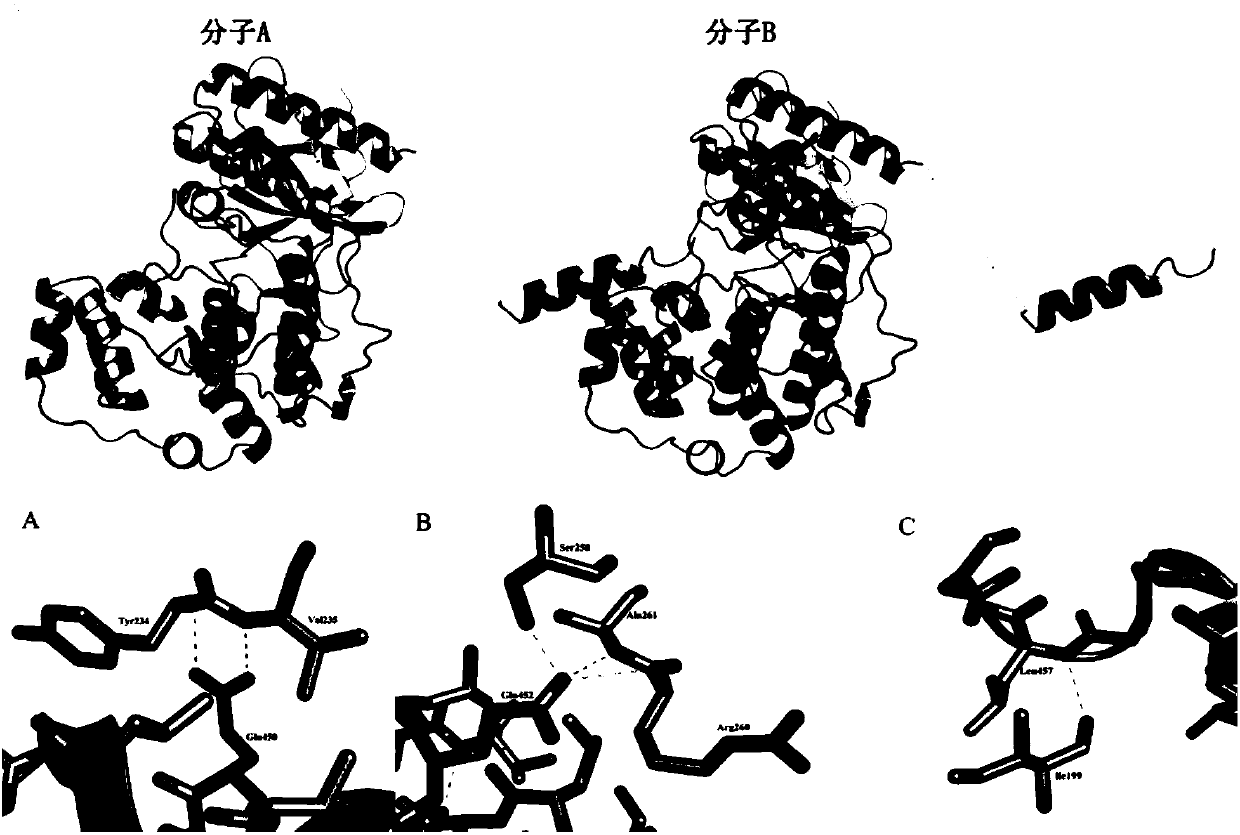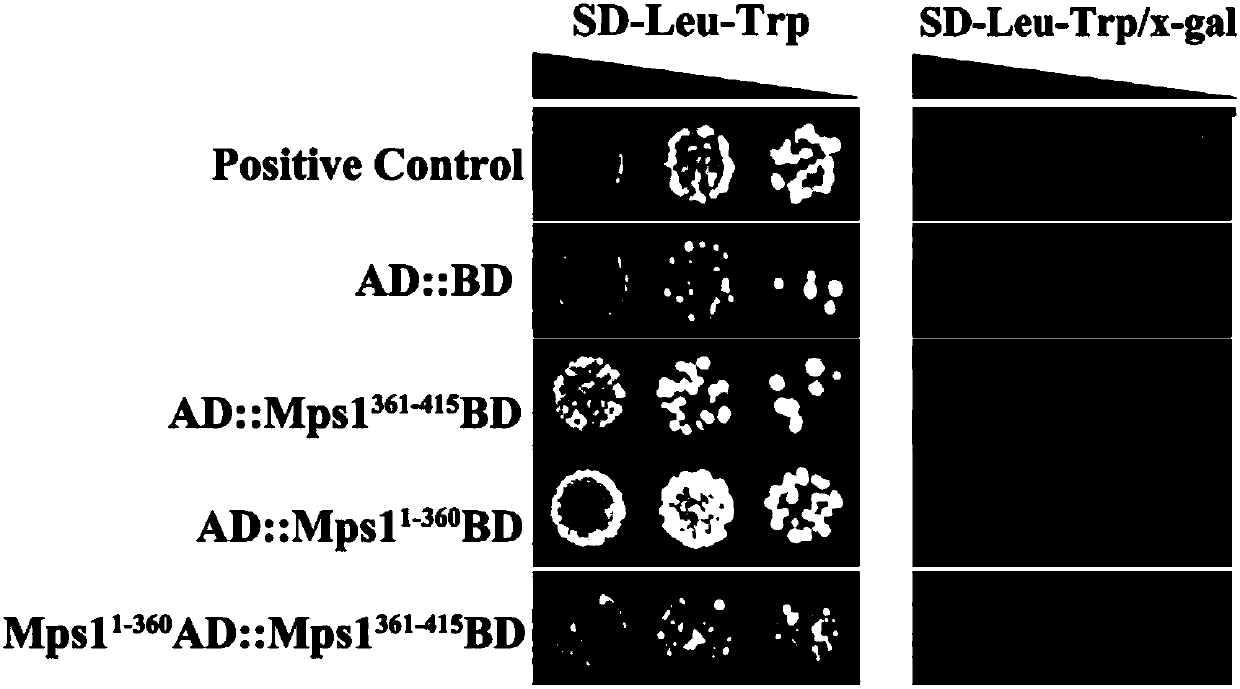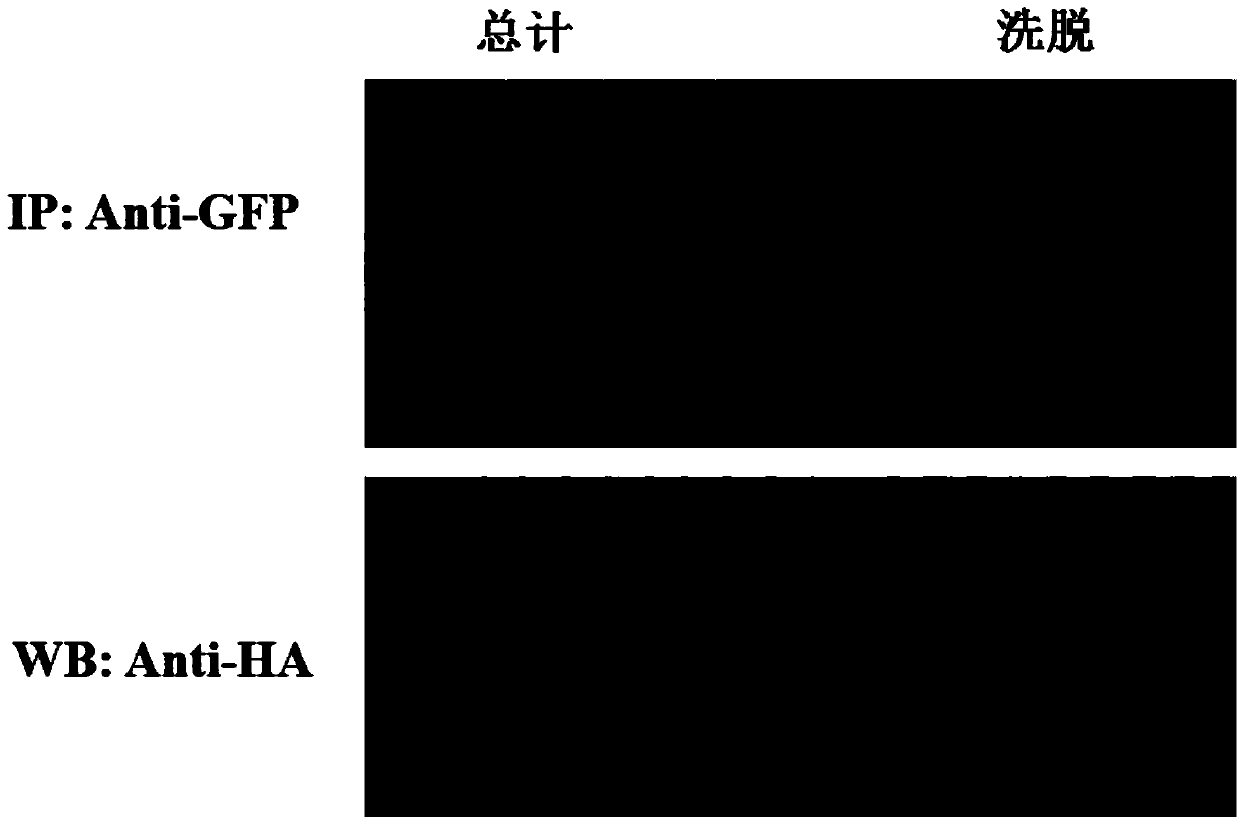Protein crystal structure of magnaporthe oryzae mitogen-activated protein kinase Mpsl and application of protein crystal structure in bactericide target
A technique for activating protein kinases, crystal structures, applied in the fields of molecular biology and genetic engineering
- Summary
- Abstract
- Description
- Claims
- Application Information
AI Technical Summary
Problems solved by technology
Method used
Image
Examples
Embodiment 1
[0029] Embodiment 1 Mps1 structure analysis
[0030] Based on the Mps1 protein crystal diffraction data collected earlier, homology modeling was carried out using the method of homologous molecular replacement, and the protein crystal structure of Mps1 was successfully resolved. High-resolution protein crystal structures, via figure 1 It can be found that the obtained structure is composed of two molecules, and the carboxy-terminal non-kinase domain of Mps1 (further experimental verification, and finally confirmed that it is composed of 15 amino acids) is close to the substrate binding site of the kinase in its structure, namely The presumed 15-amino acid carboxy-terminal non-kinase domain of Mps1 (Mps1 401-415 ) may be associated with the kinase domain (Mps1 1-360), further analysis of the analyzed crystal structure of Mps1 protein revealed that there is self-interaction, and the interaction interface is mainly concentrated in the C-terminal region of Mps1 molecule A (carb...
Embodiment 2
[0031] Example 2 Mps1 self-interaction analysis:
[0032] In order to verify that the carboxy-terminal non-kinase domain of Mps1 seen in the structure of Example 1 may interact with its own kinase domain, yeast two-hybrid technology and co-immunoprecipitation technology are used to verify and analyze it.
[0033] 1 Yeast two-hybrid, specifically including the following related reagents and steps:
[0034] Reagents: yeast two-hybrid kit, fission yeast auxotrophic strain AH109 (purchased from Clontech);
[0035] Vector: pGADT7, pGBKT7 (purchased from Clontech);
[0036] step:
[0037] (1) Yeast AH109 frozen at -80°C in the early stage of streak culture, pick a single colony and inoculate it into a 200mL sterilized Erlenmeyer flask containing 50mL YPDA liquid medium, and culture it with shaking at 30°C and 250rpm until OD 600 >1.5;
[0038] (2) Quantitatively take 200 μL of the above culture in 300 mL YPDA liquid medium and shake it at 30°C and 250 rpm until the OD 600 reach...
Embodiment 3
[0061] Example 3 Mps1 Phosphorylation Level Analysis (Western blot)
[0062] Reagents: all conventional reagents;
[0063] step:
[0064] (1) pre-purified Mps1 WT and Mps1 1-360 Prepare samples according to the condition of equal mass ratio; take 80 μL of the protein sample prepared above, add 20 μL of 5×protein loading buffer, boil for 5 minutes, and let stand on ice for 5 minutes before use;
[0065] (2) Prepare SDS-PAGE protein glue according to the formula on the Takara catalogue, and load the sample;
[0066] (3) Electrotransfer the SDS-PAGE protein gel at 15V overnight (note: apply it to the positive pole and glue to the negative pole), and place the electroporation tank on the stirrer to avoid burning out the electrotransfer instrument;
[0067] (4) First stain with Ponceau S solution for about 0.5min, and the protein transferred to the membrane can be seen; after pouring off the staining solution, use 5% skimmed milk powder (prepared with 1×TBS-T buffer) at room te...
PUM
 Login to View More
Login to View More Abstract
Description
Claims
Application Information
 Login to View More
Login to View More - R&D
- Intellectual Property
- Life Sciences
- Materials
- Tech Scout
- Unparalleled Data Quality
- Higher Quality Content
- 60% Fewer Hallucinations
Browse by: Latest US Patents, China's latest patents, Technical Efficacy Thesaurus, Application Domain, Technology Topic, Popular Technical Reports.
© 2025 PatSnap. All rights reserved.Legal|Privacy policy|Modern Slavery Act Transparency Statement|Sitemap|About US| Contact US: help@patsnap.com



